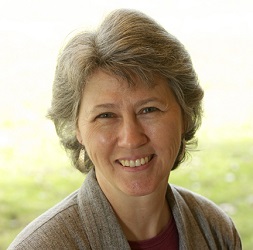Commentary on Matthew 13:31-33, 44-52
The COVID-19 pandemic has shown us how something so small that it is invisible to the eye can grow rapidly and exponentially into a destructive force that consumes all our attention and resources, as individuals, communities, nations, and as a world.
The passage for this lection offers a counter-image to this destructive force. The parables describe how the kin(g)dom of heaven emerges from something almost invisible to the eye and grows exponentially, offering us sustenance, a treasure worthy of all our attention and resources.
While the piling up of parable after parable in this passage can make it a challenge to find a focus, the structure of the passage reveals thematic development. The two parables in 13:31-33 both draw attention to remarkable growth arising from insignificant beginnings. Similarly, the two parables in 13:44-46 both point to discovering something of such great value that we are willing to sell all we have to possess it. The two pairs of parables are linked through the word “hide” (krupto): in the parable of the yeast the woman hides yeast in the flour, while in the parable that follows, the treasure is hidden in a field.1
The parable of the net in 13:47-52 embeds the passage within the larger context of chapter 13 by echoing the climax to the parable of the weeds; the connection between the two parables is re-enforced by the way the parable of the weeds is woven into verses 31-46:
A The parable of the weeds in 13:24-30 (see last week’s essay)
B The parables of growth (verses 31-33)
C The explanation of the parable of the weeds (verses 34-43)
B’ The parables of discovery (verses 44-46)
A’ The parable of the net of fish (verses 47-48)
This frame invites connections between the several parables. For example, the explanation of the parable of the weeds describes the parables as “hidden from the foundation of the world” (Matthew 13:35) while the parables of growth both describe the revelation of something that is hidden. The promise of vindication in the parables of the weeds and the net of fish underscore the hope generated by the parables of growth and discovery.
Of interest are the diverse socioeconomic settings represented in the parables:
- a sower of seed,
- a woman baking bread,
- a fortune seeker, a merchant,
- a commercial fisher.
These reflect types easily recognized in the world of the Gospel and today, each individual going about their work. The ordinariness of the tasks invites us to see signs of the kin(g)dom of heaven in our day-to-day lives; to recognize that it is emerging in our very midst. This becomes an invitation to us to cultivate the practice of seeing God’s work among us through questions:
- What do we expect to see?
- And where do we expect to find it?
- Have there been times when our expectations have been overturned?
The tangibleness of the kin(g)dom of heaven is revealed where each of the parables touches on images found elsewhere in the Gospel:
- The parable of the mustard seed calls to mind the parable of the sower, but rather than focus on the soil or the seed, it focuses on the shrub that emerges, sturdy enough to house the nests of birds. Birds also receive God’s care in Matthew 6:26: “Look at the birds of the air; they neither sow nor reap nor gather into barns, and yet your heavenly Father feeds them.”
- The parable of the yeast builds on the theme of God’s care by anticipating the feeding of the multitudes, a story that occurs twice in Matthew (14:13-21; 15:32-39). Notably, Matthew adds that it was not just the men who were fed, but also the women and children (14:21; 15:38)—those who are often most vulnerable when food is scarce.
- The parable of the treasure hidden in the field hearkens back to Matthew 6:19-20: “Do not store up for yourselves treasures on earth … but store up for yourselves treasures in heaven, where neither moth nor rust consumes and where thieves do not break in and steal.” It also anticipates Jesus’ words to the rich man: “If you wish to be perfect, go, sell your possessions, and give the money to the poor, and you will have treasure in heaven; then come, follow me” (19:21). Read together with the parable of the treasure hidden in the field, we are a reminder that “where your treasure is, there your heart will be also” (6:21). This is almost too tangible for comfort. Yet we are reminded by the preceding parables that the kin(g)dom of God does not ignore our needs; rather, God challenges our material excess acquired for self-serving purposes.
The parable of the pearl moves us in a different direction. In Matthew 7:6, Jesus cautions the disciples, “do not throw your pearls before swine, or they will trample them under foot and turn and maul you.” The swine may be a reference to the Romans; it is, any case, it is an insulting reference to those who oppose the kin(g)dom. Like the soil on the path or the rocky ground in the parable of the sower, we are reminded that the priceless kin(g)dom of heaven will not be welcomed by everyone.
The parable of the yeast suggests that opposition may come even from within. The image of yeast occurs again in Matthew 16:5-12 where Jesus warns the disciples of the leaven of the religious leaders, who, with their teachings, “lock[] people out of the kingdom of heaven” (Matthew 23:13). Although we may think of the religious leaders as outsiders within the narrative, they belong to the same religious world as Jesus.
It is not only the religious leaders of whom we need to be wary. Matthew 13 concludes with Jesus asking the disciples if they have understood the parables that they have heard. The disciples respond yes. Perhaps we are intended to take their answer at face value. I confess to being suspicious, having learned that hard way that understanding often emerges over time and in new ways, proving my first level of understanding to have been short-sighted.
Notes
- Further writing on these parables is found in my essay, “Women’s Work in the Realm of God” (with Antoinette Clark Wire), in The Lost Coin: Parables of Women, Work and Wisdom (edited by Mary Ann Beavis; Sheffield, UK: Sheffield Academic Press, 2002), pp. 135-57.


July 26, 2020